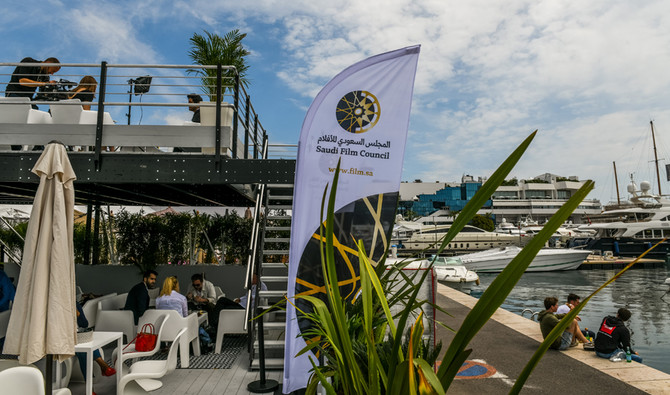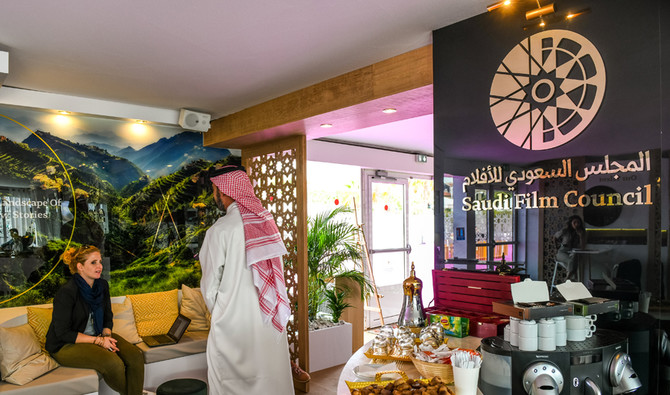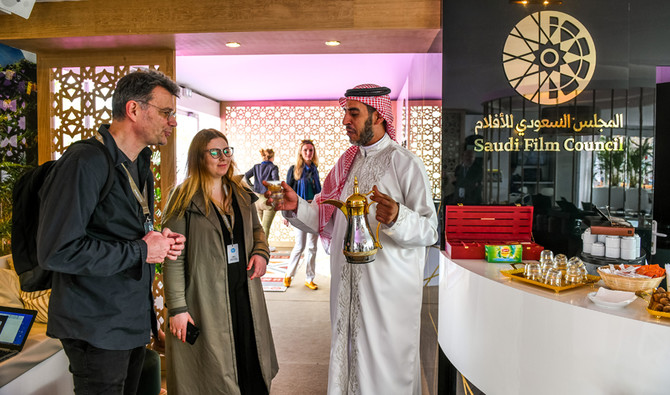CANNES: Gahwa took the place of café au lait on the Croisette yesterday as the Saudi Film Council began welcoming guests to its pavilion at the 71st Cannes Film Festival.
More than 40 delegates from Saudi Arabia, including the council’s CEO Faisal Baltyuor, are in France this week to showcase the Kingdom’s movie industry at the Marché du Film, the festival’s industry market. It is the first time the country has participated in Cannes, one of the world’s most prestigious festivals.
“The Kingdom has looked forward to its debut presence here, celebrating and supporting the diversity of talent and opportunities within the Saudi film industry,” said Ahmad Al-Maziad, CEO of the General Culture Authority, which oversees the Saudi Film Council.
The delegation has organized a series of panels that will begin in the pavilion on Thursday and run until Tuesday. Topics range from “Saudi Arabia: The Next Frontier of Filming Locations” to “Groundbreaking Women in Film in Saudi Arabia and the MENA Region.”
Nine short films by young Saudi directors will screen as part of the Short Film Corner on May 14 and 15, including “Is Sumiyati Going to Hell?” by Meshal Aljaser, about a maid working for racist employers, and “Alkaif” by Seba Alluqmani, about the country’s coffee tradition.
“With a rich tradition of storytelling, Saudi Arabia is embarking on the development of a sustainable and dynamic industry that supports and encourages our local talent,” Al-Maziad said.
On top of a daily majlis, the pavilion will host a media breakfast on Friday and an industry lunch on Sunday.
The Saudi Film Council was launched in March by the General Culture Authority as part of Vision 2030’s goal to diversify the economy through industries such as tourism and culture. The invite-only festival runs until May 19.
The nine Saudi short films screening:
- Don’t Go Too Far by Maram Taibah
- The Scapegoat by Talha B
- Wasati by Ali Alkalthami
- Al-Qatt by Faisal Alotaibi
- Coexistence by Musab Alamri
- Film School Musical by Maan B and Talha B
- The Darkness Is a Color by Mutjaba Saeed
- Alkaif by Seba Alluqmani
- Is Sumiyati Going to Hell? by Meshal Aljaser




















